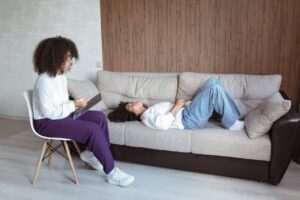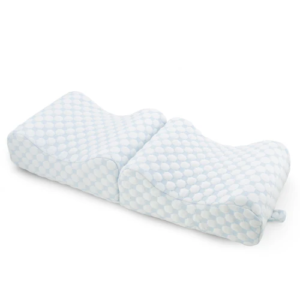
Influencing both sleep quality and duration. The relationship between body temperature and sleep is intricate, governed by circadian rhythms and environmental factors. Understanding how temperature impacts sleep can provide insights into managing insomnia effectively.
The Circadian Rhythm and Temperature
Central to the regulation of sleep-wake cycles is the circadian rhythm, a biological process that follows a roughly 24-hour cycle. Core body temperature is closely tied to this rhythm, typically peaking in the late afternoon and reaching its lowest point during the early morning hours, coinciding with the deepest phase of sleep.
Melatonin, a hormone that regulates sleep, is also influenced by temperature changes. Melatonin levels rise as body temperature falls, signaling the body to prepare for sleep. Disruptions to this cycle, such as irregular sleep schedules or exposure to extreme temperatures, can lead to sleep disturbances and insomnia.
Environmental Temperature and Sleep Quality
External temperature plays a significant role in sleep quality. The ideal bedroom temperature for most individuals ranges from 60 to 67 degrees Fahrenheit (approximately 15.5 to 19.5 degrees Celsius). This range facilitates the body’s natural cooling process, promoting deeper sleep.
Rooms that are too hot or too cold can interfere with thermoregulation, making it difficult to fall asleep or stay asleep. High temperatures can cause discomfort and night sweats, while cold temperatures can lead to shivering and vasoconstriction, disrupting sleep continuity.
Impact of Temperature Extremes on Insomnia
Extreme temperatures, whether hot or cold, can exacerbate insomnia symptoms. Heat waves, common during summer months, can increase nocturnal awakenings and reduce overall sleep duration. Conversely, cold environments can trigger stress responses in the body, elevating cortisol levels and hindering relaxation necessary for sleep onset.
Individual susceptibility to temperature extremes varies based on factors such as age, health conditions, and personal comfort preferences. Older adults and those with chronic health issues may be more sensitive to temperature fluctuations, necessitating careful management of bedroom conditions to promote restful sleep.
Therapeutic Applications of Temperature Regulation
Managing bedroom temperature is crucial for individuals with insomnia. Strategies include:
- Optimizing Bedroom Environment: Maintain a cool, comfortable room temperature conducive to sleep. Use fans, air conditioning, or heating as needed to achieve the ideal sleeping environment.
- Bedding and Clothing: Choose breathable bedding materials such as cotton or moisture-wicking fabrics to regulate body temperature. Wear lightweight, comfortable sleepwear that allows heat dissipation.
- Temperature Adjustments: Experiment with different room temperatures to find what works best for individual comfort. Gradually cool down the bedroom before bedtime to signal the body’s natural sleep onset process.
- Temperature-Regulating Devices: Consider using temperature-regulating devices such as cooling pillows or mattress pads that help maintain a consistent, comfortable sleep surface.
- Daily Routine: Establish a consistent sleep schedule aligned with circadian rhythms. Avoid exposure to extreme temperatures or bright light in the hours leading up to bedtime, as these can disrupt melatonin production and delay sleep onset.
Conclusion
Temperature regulation plays a critical role in the management of insomnia, influencing sleep quality and duration through its effects on circadian rhythms and thermoregulation. Understanding the impact of environmental temperature on sleep patterns can empower individuals to adopt effective strategies for improving sleep hygiene and overall well-being. By creating a conducive sleep environment and incorporating temperature-regulating practices into daily routines, individuals can enhance their ability to achieve restful, rejuvenating sleep.

























